Galician Female Architects—A Critical Approach to Inequality in the Architectural Profession (1931–1986)
Abstract
1. Introduction
2. Precedents Outlined during the Democratic Experience in the Second Spanish Republic (1931–1939): Rita Fernández Queimadelos among the First Generation of Women at the University Studies in Architecture in Madrid
3. Exceptionality during the Housewifization Fueled by the Dictatorship (1939–1975): Elena Arregui Cruz-López and Milagros Rey Hombre in the Initial Period
The policy of defining women everywhere as dependent housewives, or the process of housewifization, is identified as the main strategy of international capital to integrate women worldwide into the accumulation process. This implies the splitting up of the economy and the labor market into a so-called formal, modern sector, in which mainly men work, and into an informal sector, where the masses of women work who are not considered to be real wage-workers, but housewives.
4. First Declared Feminist Concerns in the Transition to Democracy (1975–1982): Myriam Goluboff Scheps, Pascuala Campos de Michelena, María Jesús Blanco Piñeiro and Julia Fernández de Caleya Blankemeyer in the Continuity Period
5. Galician Female Architects in the Progressive Democratic Institutionalization (1982–1986) and Pioneer Leading Roles into Politics: Pilar Rojo Noguera and Teresa Táboas Veleiro in the Consolidation Period
6. The Quantitative and Qualitative Legacy of the Pioneers: Galician Female Architects in Transition (>1986)
7. Results and Discussion
The most important feature of the female segment is working as the sum of individualities and not as a collective. Women, isolated one from each other, find themselves alone performing identical duties.
8. Materials and Methods
9. To Conclude: “I Did What I Could. And That’s Already a Lot”
Author Contributions
Funding
Acknowledgments
Conflicts of Interest
Appendix A
| Surname, Name | Academic Year | |
|---|---|---|
| 1 | Brussotto Rodrigálvarez, María de los Ángeles | 1981–1982 |
| 2 | Arenal Fernández, María Teresa | 1983–1984 |
| 3 | Malo Pérez, María Luisa | 1983–1984 |
| 4 | Novás Fernández, María de los Ángeles | 1983–1984 |
| 5 | Pérez Naya, Antonia María | 1983–1984 |
| 6 | Cifuentes Rama, María José | 1984–1985 |
| 7 | Fonticoba Graña, Ana María | 1984–1985 |
| 8 | Bermúdez de Castro Muñoz, María del Carmen | 1985–1986 |
| 9 | Casares Gallego, María Amparo | 1985–1986 |
| 10 | Castelo Villanueva, María Jesús | 1985–1986 |
| 11 | Castro Dapena, María de los Ángeles | 1985–1986 |
| 12 | García García, María del Mar | 1985–1986 |
| 13 | Llorente Taboada, María de la Paz | 1985–1986 |
| 14 | Riestra Rodriguez-Losada, Teresa | 1985–1986 |
| 15 | Rojo Noguera, Pilar | 1985–1986 |
| License | Surname, Name | Year | |
|---|---|---|---|
| 1 | 43 | Rey Hombre, María del Milagro | 1961 |
| 2 | 44 | Arregui-Cruz Lopez, Elena | 1962 |
| 3 | 79 | Campos de Michelena, Pascuala | 1968 |
| 4 | 106 | Blanco Piñeiro, María Jesús | 1972 |
| 5 | 120 | Fernández de Caleya Blankemeyer, Julia | 1973 |
| 6 | 132 | Fernández Puentes, Ana María | 1973 |
| 7 | 331 | López Franjo, María del Carmen | 1975 |
| 8 | 335 | García Gil-Escolar, Luisa | 1975 |
| 9 | 392 | Campoy Vázquez, Laura | 1976 |
| 10 | 476 | Portos Taboada, María Ilde | 1977 |
| 11 | 534 | Forte Villanueva, Graciela | 1978 |
| 12 | 548 | López Favre, Elia Elisa | 1978 |
| 13 | 681 | Gómez Somoza, Clara | 1980 |
| 14 | 709 | Leboreiro Amaro, María de los Ángeles | 1980 |
| 15 | 757 | Cameselle Sola, María Concepción | 1981 |
| 16 | 821 | Pernas Prieto, María Celia | 1982 |
| 17 | 850 | Insua Cabanas, Mercedes | 1982 |
| 18 | 866 | Maquieira Miguens, María Mercedes | 1983 |
| 19 | 867 | Vila Pérez, Carmen | 1983 |
| 20 | 956 | Peláez Rivero, María Dolores Luz | 1984 |
| 21 | 1000 | Fonticoba Graña, Ana María | 1985 |
| 22 | 1030 | Goldaracena del Valle, Luisa | 1985 |
| 23 | 1056 | Carballo Arceo, Julia | 1986 |
| 24 | 1078 | Casares Gallego, María Amparo | 1986 |
| 25 | 1079 | García García, María del Mar | 1986 |
| 26 | 1082 | García-Magariño Vázquez, María del Pilar | 1986 |
| 27 | 1110 | Castelo Villanueva, María Jesús | 1986 |
| 28 | 1113 | Gonzalez Valeiras, María Josefa | 1986 |
References
- Agudo Arroyo, Yolanda, and Inés Sánchez de Madariaga. 2011. Construyendo un lugar en la profesión: Trayectorias de las arquitectas españolas. Feminismo/s: La arquitectura y el urbanismo con perspectiva de género 17: 151–81. [Google Scholar] [CrossRef]
- Álvarez Lombardero, Nuria. 2016. De la marginalidad a la redefinición de la práctica arquitectónica. Una nueva generación de arquitectas ibéricas. Sociedad y Utopía. Revista de Ciencias Sociales 47: 297–306. Available online: http://www.sociedadyutopia.es/images/revistas/47/47.pdf (accessed on 24 October 2019).
- Álvarez Lombardero, Nuria. 2017. La mujer arquitecta como sujeto de una necesaria redefinición de la práctica profesional desde la perspectiva española. Dearq Revista de Arquitectura de la Universidad de Los Andes: Mujeres en Arquitectura 20: 70–76. Available online: https://revistas.uniandes.edu.co/doi/pdf/10.18389/dearq20.2017.08 (accessed on 24 October 2019).
- Bisquert, Adriana, and Coord Isabel Navarro. 1995. Actas del curso: Urbanismo y Mujer. Nuevas visiones del espacio público y privado, Málaga 1993–Toledo 1994. Madrid: Seminario Permanente “Ciudad y Mujer”. [Google Scholar]
- Campos de Michelena, Pascuala. 1993. Escuela de Formación Pesquera, Arosa. Fishery Training School, Arosa. In Anuario/Yearbook 1993 Arquitectura Española, Spanish Architecture. Edited by Luis Fernández Galiano. Madrid: AviSa (Arquitectura Viva, S.L.), pp. 130–33. [Google Scholar]
- Campos de Michelena, Pascuala. 1995a. Identidad y Proyecto. Hacer arquitectura es una manera de estar en el mundo. In Actas del curso: Urbanismo y Mujer. Nuevas visiones del espacio público y privado, Málaga 1993-Toledo 1994. Edited by Adriana Bisquert and Isabel Navarro. Madrid: Seminario Permanente “Ciudad y Mujer”, pp. 265–67. [Google Scholar]
- Campos de Michelena, Pascuala. 1995b. Escola de Formación Pesqueira. Niño Do Corvo. Illa de Arousa. In Lugar, Memoria e Proxecto. Galicia 1974–94. Edited by Miguel Ángel Baldellou. Santiago de Compostela: Consello da Cultura Galega, Milan: Electa, pp. 136–37. [Google Scholar]
- Campos de Michelena, Pascuala. 1996. Influencia de las ciudades en la vida de las mujeres. In Mujer y Urbanismo: Una recreación del espacio. Claves para pensar en la ciudad y el urbanismo desde una perspectiva de género. Edited by Charo Rubio Alférez and Miguel Ardid Gumiel. Madrid: Federación Española de Municipios y Provincias y Comisión de la Mujer, pp. 23–30. [Google Scholar]
- Carreiro Otero, María, and Cándido López González. 2016a. Un modelo de investigación proyectual: Arquitectas en la cocina. Paper presented at Engendering Habitat III. 5th Engendering International Conference, Madrid, Spain, October 5–6; Available online: http://hdl.handle.net/2183/17454 (accessed on 24 October 2019).
- Carreiro Otero, María, and Cándido López González. 2016b. Arquitectas pioneras de Galicia. Ocho entrevistas. A Coruña: Universidade da Coruña. [Google Scholar]
- Carreiro Otero, María, and Cándido López González. 2019. La cocina moderna en la vivienda colectiva española a través de los concursos de arquitectura del período 1929–1956. ACE: Architecture, City and Environment = Arquitectura, Ciudad y Entorno 13: 183–210. [Google Scholar] [CrossRef]
- Carreiro Otero, María, Cándido López González, Eduardo Caridad Yáñez, Paula Fernández-Gago Longueira, Mónica Mesejo Conde, and Inés Pernas Alonso. 2013. El caso de las arquitectas de Galicia. Metodología aplicada al estudio de una profesión. Paper presented at I Congreso de Género, Museos y Arte, Lugo, Spain, October 11–13; Available online: https://ruc.udc.es/dspace/handle/2183/20759 (accessed on 24 October 2019).
- Carreiro Otero, María, Cándido López González, Xosé Lois Martínez Suárez, Inés Pernas Alonso, Eduardo Caridad Yañez, Paula Fernández-Gago Longueira, and Mónica Mesejo Conde. 2014. Las mujeres arquitectas de Galicia: Su papel en la profesión y en la enseñanza de la profesión (El ejercicio de la Arquitectura en Galicia desde una perspectiva de género). Madrid: Instituto de la Mujer. Ministerio de Sanidad, Servicios Sociales e Igualdad. Available online: http://www.inmujer.gob.es/publicacioneselectronicas/documentacion/Documentos/DE1424old.pdf (accessed on 24 October 2019).
- Casares Gallego, Amparo, and Julia Álvarez García. 2013. Pascuala Campos de Michelena: O camiño á nosa identidade. In As mulleres nas artes e nas ciencias. Vol I: Reflexións e testemuñas. Edited by Rocío Chao Fernández, María Dorinda Mato Vázquez and Roberto Suárez Brandariz. A Coruña: Universidade da Coruña, pp. 33–41. [Google Scholar]
- Chías Navarro, Pilar. 2011. Estudiantes de arquitectura: ¿un ámbito de igualdad? Feminismo/s: La arquitectura y el urbanismo con perspectiva de género 17: 91–103. [Google Scholar] [CrossRef]
- Comisión de Igualdade do Consello da Cultura Galega. n.d. Album de mulleres: Pascuala Campos de Michelena. Available online: http://culturagalega.gal/album/detalle.php?id=1090 (accessed on 24 October 2019).
- Fernández-Gago Longueira, Paula. 2013. Evolución cuantitativa de la presencia de la mujer en la ETSAC desde el comienzo de la actividad docente. In Jornadas Mujer y Arquitectura. Experiencia Docente, Investigadora y Profesional. Edited by Cándido López González. A Coruña: Grupo de investigación MAGA, ETSA A Coruña, UDC, pp. 65–71. Available online: https://ruc.udc.es/dspace/bitstream/handle/2183/9986/JMA_26_27_nov12_ruc.pdf?sequence=6&isAllowed=y (accessed on 24 October 2019).
- Fernández-Gago Longueira, Paula, Inés Pernas Alonso, Eduardo Caridad Yañez, María Carreiro Otero, Cándido López González, and Mónica Mesejo Conde. 2014. Arquitectas de Galicia en las revistas de arquitectura. In Libro de actas: II International Conference Gender and Communication. Edited by Juan Carlos Suárez Villegas, María Rosario Lacalle Zalduendo and José Manuel Pérez Tornero. Sevilla: Universidad de Sevilla, pp. 969–85. Available online: https://ruc.udc.es/dspace/handle/2183/20761 (accessed on 24 October 2019).
- Goluboff Scheps, Myriam. 2009. Huellas: Mario Soto. rd 2 revista del CAPBA distrito 2 63: 157–74. Available online: http://www.mariosoto.net/docs/Mario%20Soto%20por%20Myriam%20Goluboff%20www-mariosoto-net.pdf (accessed on 24 October 2019).
- Herreros Ara, Aida, Marta Mantecón Pérez, José Ramón Saiz Viadero, and Raquel Serdio Díaz. 2007. Damas ilustres y mujeres dignas. Algunas historias extraordinarias del siglo XX en Cantabria. Santander: Gobierno de Cantabria, Dirección General de la Mujer. [Google Scholar]
- López González, Cándido, Paula Fernández-Gago Longueira, and María Carreiro Otero. 2017. Rita Fernández Queimadelos. Los proyectos de reconstrucción en los Carabancheles, 1943–1945. Arenal: Revista de Historia de Mujeres 24: 169–202. Available online: http://revistaseug.ugr.es/index.php/arenal/article/view/3175 (accessed on 24 October 2019).
- Mies, Maria. 1998. Patriarchy and Accumulation on a World Scale. Women in the International Division of Labour, 2nd ed. London and New York: Zed Books. [Google Scholar]
- Muxí Martínez, Zaida. 2013. Primera generación de arquitectas catalanas, ETSAB 1964–1975. In Jornadas Mujer y Arquitectura. Experiencia Docente, Investigadora y Profesional. 26/27 noviembre 2012. Edited by Cándido López González. A Coruña: Grupo de investigación MAGA, ETSA A Coruña, UDC, pp. 31–63. Available online: https://ruc.udc.es/dspace/bitstream/handle/2183/9986/JMA_26_27_nov12_ruc.pdf?sequence=6&isAllowed=y (accessed on 24 October 2019).
- Palomares, Manuel. 2017. Las primeras mujeres en el Servicio Meteorológico español. Available online: http://www.divulgameteo.es/fotos/meteoroteca/Primeras-mujeres-SMN.pdf (accessed on 24 October 2019).
- Pérez Moreno, Lucía C. 2016. The ‘Transition’ as a turning point for female agency in Spanish architecture. In A Gendered Profession: The Question of Representation in Space Making. Edited by James Benedict Brown, Harriet Harriss, Ruth Morrow and James Soane. London: RIBA Publishing, pp. 108–15. [Google Scholar]
- Rebollo Mesas, Pilar. 2001. El Servicio Social de la mujer de Sección Femenina de Falange Su implantación en el medio rural. In Nuevas tendencias historiográficas e historia local en España: Actas el II Congreso de Historia Local de Aragón (Huesca, 7 al 9 de julio de 1999). Edited by Miguel Ángel Ruiz Carnicer and Carmen Frías Corredor. Zaragoza: Universidad de Zaragoza. Available online: http://dialnet.unirioja.es/servlet/articulo?codigo=968544 (accessed on 24 October 2019).
- Río Merino, Mercedes del. 2009. Logros de las mujeres en la Arquitectura y la Ingeniería. Presented at Foro UPM, Madrid. Available online: http://oa.upm.es/1895/ (accessed on 24 October 2019).
- Sánchez de Madariaga, Inés. 2009. El papel de las mujeres en la arquitectura y el urbanismo, de Matilde Ucelay a la primera generación universitaria en paridad. In Arquitectas, un reto profesional. Jornadas internacionales de Arquitectura y Urbanismo desde la perspectiva de las arquitectas. Edited by María A. Leboreiro Amaro. Madrid: Ministerio de la Vivienda y UPM, pp. 69–77. [Google Scholar]
- Sánchez de Madariaga, Inés. 2010. Women in architecture: The Spanish case. Urban Research & Practice 3: 203–18. [Google Scholar]
- Sánchez de Madariaga, Inés. 2012. Matilde Ucelay Maórtua. Una vida en construcción: Premio Nacional de Arquitectura. Madrid: Ministerio de Fomento. [Google Scholar]
- Táboas Veleiro, Teresa. 1991. El color en arquitectura. A Coruña: Edicións do Castro. [Google Scholar]
- Vílchez Luzón, Javier. 2013. Matilde Ucelay, primera mujer arquitecta en España. Ph.D. thesis, Universidad de Granada, Granada, Spain. Available online: http://hera.ugr.es/tesisugr/21557019.pdf (accessed on 24 October 2019).
| 1 | Despite a Royal Order on the 8th March 1910 establishing that, for the first time, women could effectively access the university on the same terms than men, ten years later we can find just 429 women (2%), and almost all of them in Philosophy and Literature studies (Río Merino 2009). |
| 2 | Matilde Ucelay Maortua (Madrid, 1912–2008); María Cristina Gonzalo Pintor (Santander, 1913–2005) and Rita Fernández Queimadelos (A Cañiza, Pontevedra, 1911–Barcelona, 2008). |
| 3 | Two more women from Madrid were studying architecture during the thirties, but they dropped out of their studies very soon to get marry and exclusively work in the household: Eulalia [Laly] Urcola y Fernández (1910–2010), and Josefina [Chini] Flórez Gallego. Laly Urcola was the daughter of Eulalia Molina and the businessman Carlos Urcola Ibarra. She enrolled in 1929, but she dropped out of her studies to marry the architect Germán Álvarez de Sotomayor y Castro in 1935. Chini Flórez, daughter of the architect Antonio Flórez Urdapilleta, married the Spanish diplomat Luis Villalba (Carreiro Otero and López González 2016a). |
| 4 | Margarita Mendizábal Aracama (Vitoria-Gasteiz, 1931); María Eugenia Pérez Clemente (Coria, Cáceres, 1926–New York, 1978); Elena Arregui Cruz-López (Irún, Guipúzcoa, 1929–Santiago de Compostela, 2018) and Milagros Rey Hombre (Madrid, 1930–A Coruña, 2014). |
| 5 | Before the adaptation of the requirements of the European Higher Education Area (Bologna Plan) during the first decades of the 21st century in Spain, architectural studies were not divided into undergraduate and Master’s studies. To become an architect in Spain, you needed to succeed an academic training of around six years. After being qualified as an architect, it is compulsory to register in the correspondent Association—depending on where your practice is located. No professional experience is required. |
| 6 | MAGA is the acronym of Mulleres Arquitectas de Galicia in the Galician language, which means Female architects from Galicia. The research team, which has been directed by María Carreiro Otero, also includes the professors of architecture at University of A Coruña: Cándido López González, Xosé Lois Martínez Suárez, Inés Pernas Alonso, Eduardo Caridad Yañez, Paula Fernández-Gago Longueira, and Mónica Mesejo Conde. For more information: https://www.udc.es/es/gausmaga/arquitectura_xenero/. |
| 7 | The School of Architecture in A Coruña was created by Decree on 17 August 1973 and was initially attached to the University of Santiago de Compostela. It initiated its activity in the academic years 1975–1976. |
| 8 | Schools of Architecture were created in the nineteenth century in Spain; the first one in Madrid in 1844 and the second one in Barcelona in 1875. In 1958 (the first academic year was 1960–1961), a third one was created in Sevilla. It was not until that same decade that the graduation of the first female architects in Barcelona took place: in 1962, Margarita Brender Rubira validated her title, and in 1964 Mercedes Serra Barenys became the first Catalan student to get a degree (Muxí Martínez 2013). After Sevilla we can find, chronologically, the schools of Navarra (1964), Valencia (1966), Valladolid (1968), Las Palmas (1973), A Coruña (1973), El Vallés (1973) and San Sebastián (1977). In total, these ten accredited schools of architecture—nine public and one private (Navarra)—were the only existing ones until the 1980s in Spain, as the one in Alicante was created in 1984. |
| 9 | Galician and Spanish are gendered languages which distinguish between arquitecto (male architect) and arquitecta (female architect). The voice arquitecta, even if it existed, was not used; the Real Academia Española allows the masculine voice to designate female professionals in the case of the four liberal professions abogado (lawyer), médico (doctor), ingeniero (engineer) and arquitecto. This is an established morphological anomaly, due to the inertia of a conservative view that entrenches those professions as masculine dominated. In the case of the Galician language, arquitecta appears in the dictionary by the Real Academia Galega in 1990, in the first dictionary published after the dictatorship. The preceding Galician dictionary was published in the 1930s and only includes the masculine voice. |
| 10 | In Spain, to officially practice architecture and sign projects, you must become a member of the corresponding Association of Architects (Colegios de Arquitectos). The Associations of Architects in Spain are regional organizations, so which one depends on where you are located. The six original ones were constituted in 1931, including the Association of Architects of León, Asturias and Galicia in the northwest area of Spain. The current Association of Architects of Galicia (COAG, Colexio Oficial de Arquitectos de Galicia, in the Galician language) was officially created after its segregation, in 1973. The CSCAE (Consejo Superior de los Colegios de Arquitectos de España, in the Spanish language) is the organization that brings together and represents the current 26 established associations in Spain. The legally required affiliation involves paying a fee. |
| 11 | The first woman who graduated as Arquitecto in Spain was Matilde Ucelay Maortua (1912–2008) in 1936, the second one María Cristina Gonzalo Pintor (1913–2005), and the third one, Rita Fernández Queimadelos, both in 1940. In the post-war period, Matilde Ucelay Maortua survived different trials by court-martial, allegedly for “assistance to the rebellion” (Sánchez de Madariaga 2012). She was finally socially and politically depurada by the dictatorial regime in the form of not being allowed to receive her academic title until 1946, to sing any architectural project until 1947 and to hold any public charge in perpetuity. Despite these prohibitions, she decisively continued working on projects signed by some of her colleagues, not stopping practicing architecture. In 1951, her signature appeared on a project for the first time and she continuously developed a prolific career with more than 120 projects until her retirement in 1981 (Vílchez Luzón 2013). In 2004, she received the National Architecture Prize from the Spanish Government, the highest recognition for architects in Spain, at the age of 92. María Cristina Gonzalo Pintor graduated in 1940, while combining architecture with physics and mathematics studies (they shared common courses). She also graduated from physics and mathematics. She alternated her career as an architect (surveyor architect at the Cantabrian Association of Architects in 1946 and municipal architect in Los Corrales de Buelna) and meteorologist (Meteorological Observatory at Santander in Cantabria) (Herreros Ara et al. 2007). After a short initial destination in Sevilla, she stayed in Santander for the rest of her life and for some years she became head of the meteorological institution. In 1966, already veteran, she was promoted to Meteorologist and continued working until her retirement in 1978 (Palomares 2017). |
| 12 | Rita gave birth to six children: Vicente (1943, physician-chemicist), Rita (1945, architect), Elena (1947–2004, art historian), Dolores (1948, pharmacist), a fifth daughter who died shortly after birth (1949–1949), and Pilar (1952, dermatologist). |
| 13 | Falange was the name given to the Spanish political party of fascist inspiration founded in 1933 by José Antonio Primo de Rivera (1903–1936), son of the dictator Miguel Primo de Rivera. In the beginning, it was called Falange Española, FE. From 1934, it was named Falange Española Tradicionalista y de las Juntas de Ofensiva Nacional-Sindicalista, FET de las JONS. It was the only political party authorized during the Franco regime. La Sección Femenina (SF) was the female branch of FET-JONS. Founded in 1934, it was dissolved in 1977. During those years, it was led by Pilar Primo de Rivera (1907–1991), sister of José Antonio Primo de Rivera. |
| 14 | Real Decreto 1914/78, de 19 de mayo de 1978, by which the Women’s Social Service is suppressed. |
| 15 | Enrique (born 1960), José (1963–2008), María (1967) and Rafael (1971). |
| 16 | Both Elena Arregui and her husband paid their participation fees through a joint account to the mutual insurance for architects la Hermandad, and even their projects were signed in common, as the institution registered them with just the name of Arturo Zas. Even if she was paying her corresponding fee as an architect, under this misogynistic and unfair arrangement, the coverage did officially not include her, and she found out that she could not receive her pension. Many female architects organized together at that time to try to solve the problem: “it is time they consider us persons”, but the Hermandad got angry with “their pretensions”, which were legitimate, and finally had to be heard (Carreiro Otero and López González 2016b, p. 79). |
| 17 | Rita Fernández Queimadelos licensed before (Madrid, 1941), but she developed her whole career in Madrid and Murcia. The first licensed female architect in Galicia is Milagros Rey Hombre in 1961. Then, Elena Arregui Cruz-López in 1962. Until 1968 did not register a third one (Carreiro Otero et al. 2014). |
| 18 | Lalos is the daughter of a renowned architect from A Coruña, Santiago Rey, and Josefa Roca, from Madrid. Josefa’s health issues led them to travel frequently to Madrid. She was born in one of these trips, but the family always lived in A Coruña. |
| 19 | Pablo (born 1974). Myriam Goluboff website: https://chepsy.net/semblanza/ (accessed on 1 November 2019). |
| 20 | Sergio (born 1970), Daniel (1974) and Magdalena (1976). |
| 21 | In 2019, there were just four female architects holding a chair (catedráticas) of Architectural Projects in all the Spanish Schools of Architecture: Blanca Lleó (Madrid), and Elisa Valero (Granada) in 2012; María José Aranguren López (Madrid) in 2017 and Carmen Espegel (Madrid) in 2019. |
| 22 | José (born 1976), Hildegard (1977) and Pablo (1980). |
| 23 | Until that moment, education segregated space and contents by sex and had a mostly private nature. This changed with the adoption of the General Education Law in 1970, that made basic education compulsory for everybody up to the age of 14 (Ley 14/1970, de 4 de agosto, General de Educación y Financiamiento de la Reforma Educativa). |
| 24 | Initially, the School of Architecture of A Coruña—and consequently the first graduates—was ascribed to the University of Santiago de Compostela (USC). Currently, it is ascribed to the University of A Coruña (UDC), officially created in 1989 (Ley 11/1989 del 20 de julio, de Ordenación del Sistema Universitario de Galicia). |
| 25 | COAG data indicates that in 1989 there were 92 licensed female architects out of 789 licensed architects (11.66%). |
| 26 | Fátima (born 1992) and Alfredo (1995). |
| 27 | Teresa (born 1988) and Máximo (1991). |
| 28 | Architectural ugliness, or feísmo in the Galician language, is an architectural phenomenon (highly mediatized) that started to take shape in the architectural public debate in that decade. Proxecto terra is a project for the architectural teaching of students in secondary public education in Galicia, still successful nowadays. |
| 29 | MAGA project collected data segregated by sex until 2012. Then, Carreiro and López keep their own database up-to-date based on the electoral census of the COAG. There, elections are held periodically. Data from 2015 correspond to the electoral census of the deanery elections in that year. |
| 30 | Data compiled in the ETSAC professor’s database. There are a total of 141 professors, and 137 are architects. In total, there are 27 women professors, and 23 are architects. |
| 31 | Architectural journals analyzed from its inception to the year 2012 (in the case they are still active) included: Arquitectos (1976–2011, edited by the Association of Spanish Architects CSCAE); Arquitectura (since 1918), Obradoiro (since 1978), Quaderns d´Arquitectura i Urbanisme (since 1944) respectively established by the Associations of Architects from Madrid, Galicia and Catalonia; Boletín Académico (since 1985, School of Architecture at the University of A Coruña), and the now-extinct Hogar y Arquitectura (1955–1977, Ministry of Housing) and Nueva Forma (1966–1975, El Inmueble) (Fernández-Gago Longueira et al. 2014, pp. 971–72). |
| 32 | From the analyzed 2177 entries, of which 1053 are female-authored, 232 correspond to Galician female architects (approximately 11% of the total). From these 232 contributions, only 33 are female led—author writing on her own—as opposed to the far higher number of contributions involving joint authorship (199). From those 33, 14 had been single authored by a woman previously identified as a pioneer. Collaborative entries represent 86% of the total written by Galician female architects, where the female author is often relegated to a secondary position (Fernández-Gago Longueira et al. 2014, pp. 976–77). |
| 33 | The figures show the prevalence of practice-based professional activity (180 projects with photographs and planimetric drawings, nearly 80% of all entries) over the theoretical discourse (articles, interviews and reviews). Besides this, Galician female architects’ entries are published in geographical proximity, mostly in Galician based publications, reaching the other state-wide ones in just 13% of the cases (Fernández-Gago Longueira et al. 2014, pp. 978–79). |
| 34 | Pascuala Campos de Michelena has published her theoretical corpus, not in architectural journals, but mostly in feminist and specialized publications focused on gender issues during the 1990s. This proves how architectural media did not include those topics, not considered legitimate to be published, excluding specific women’s concerns. |
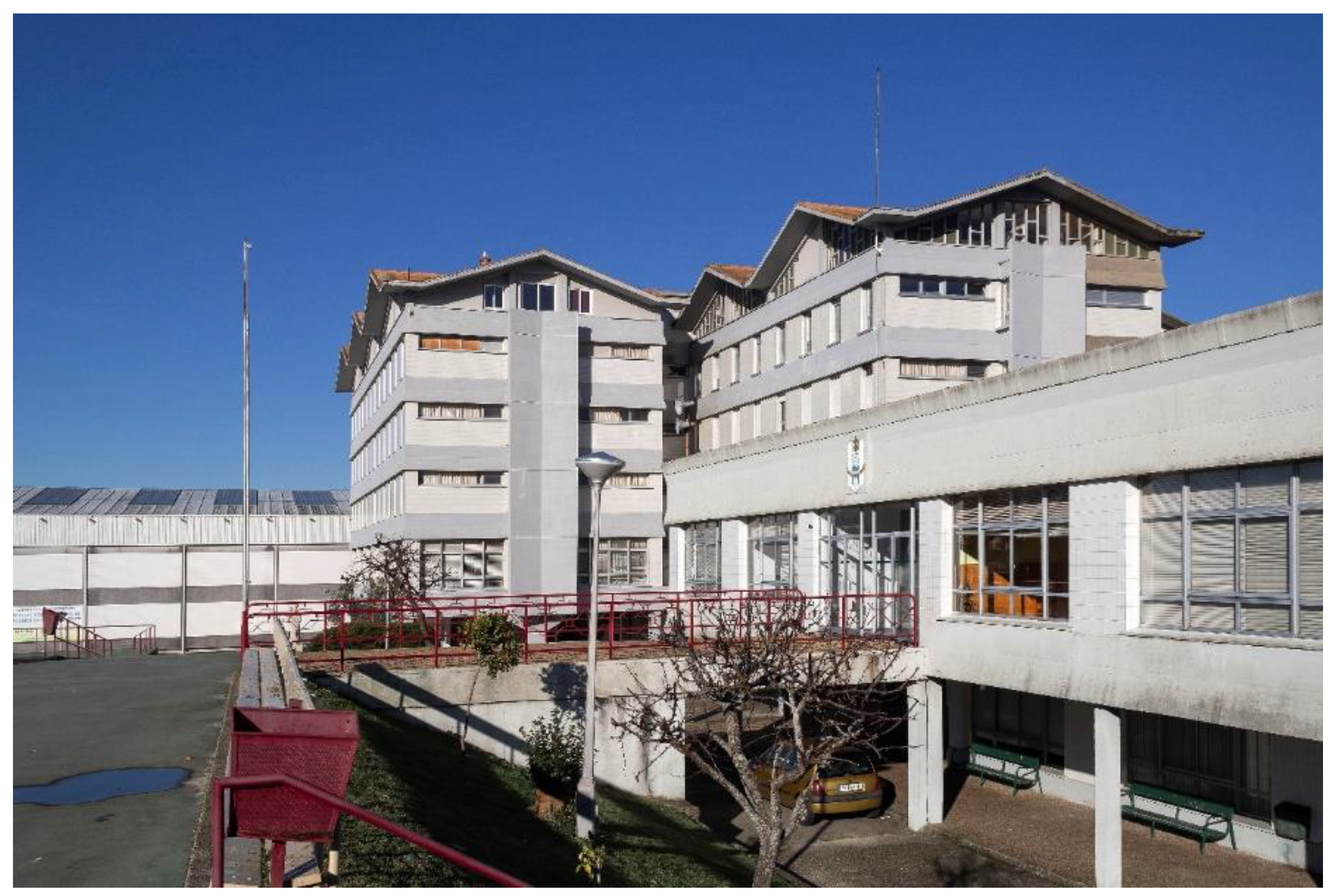
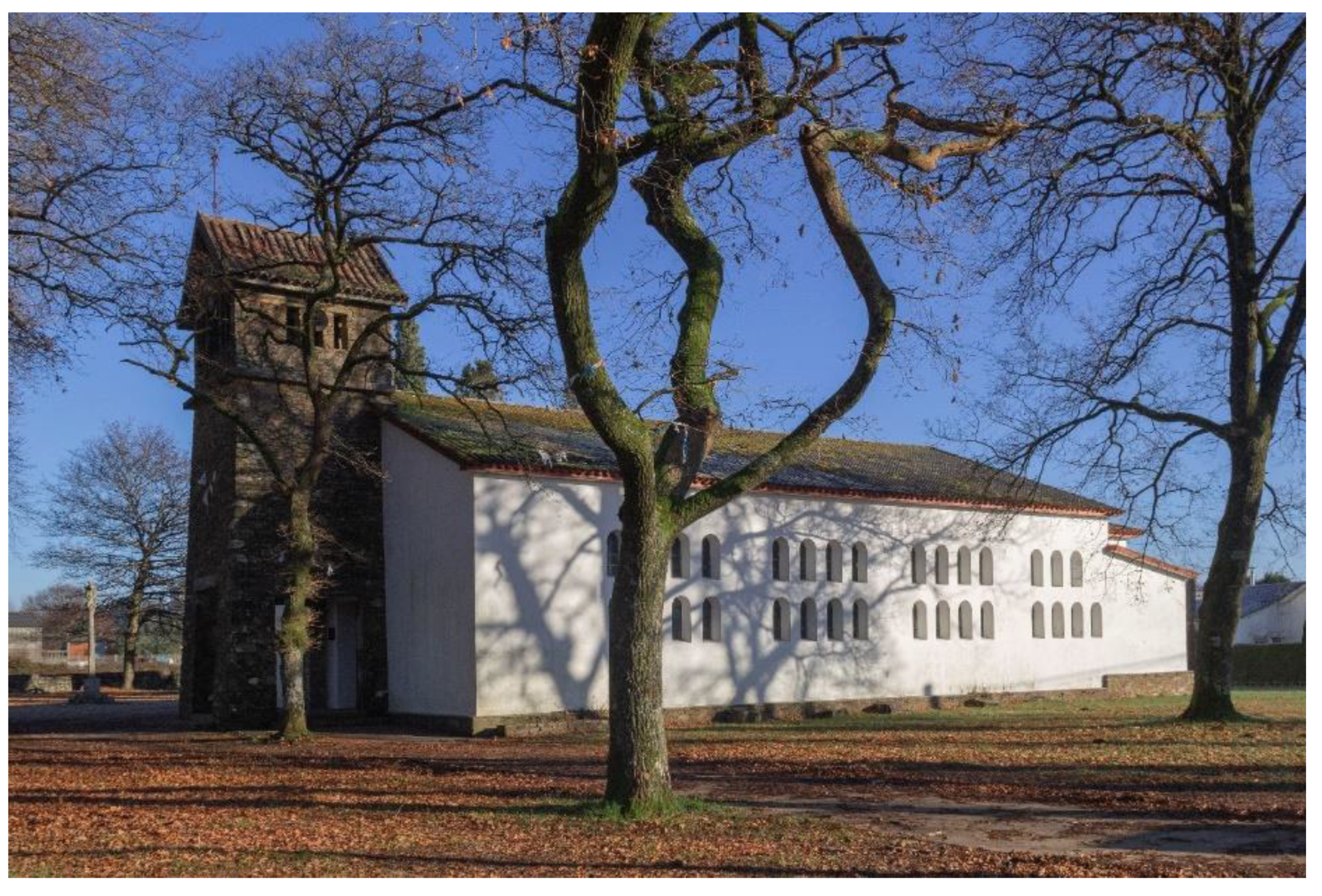
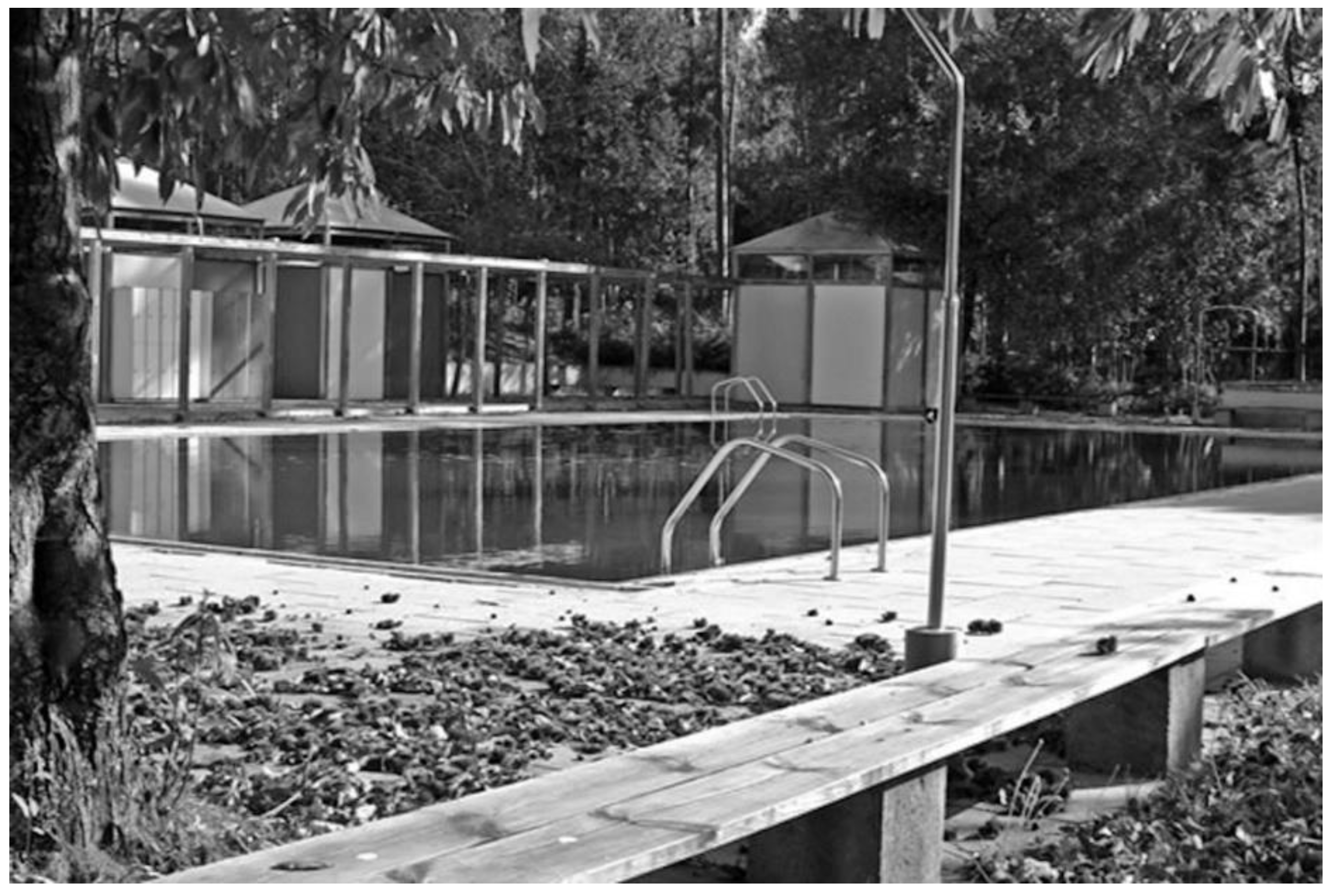
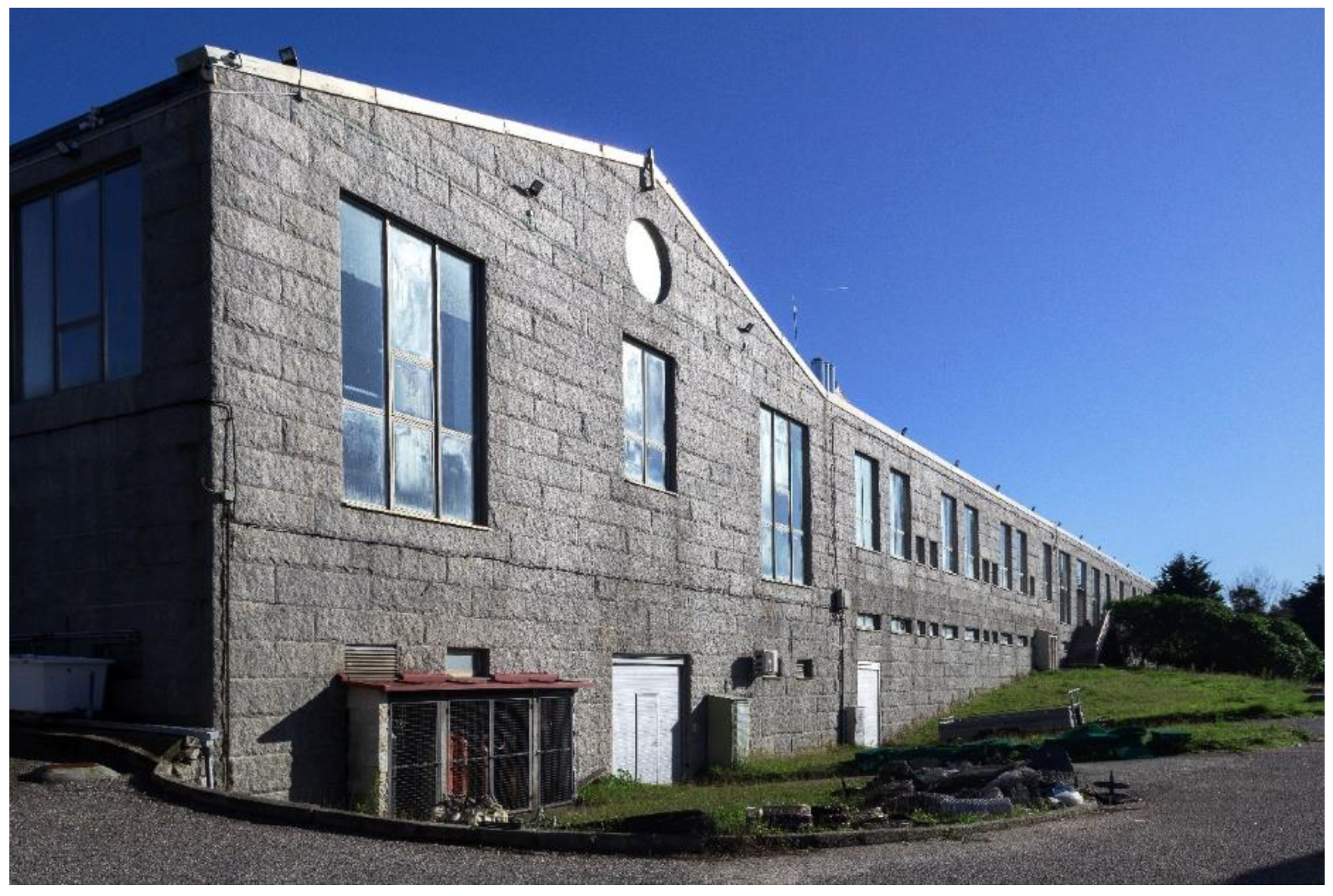
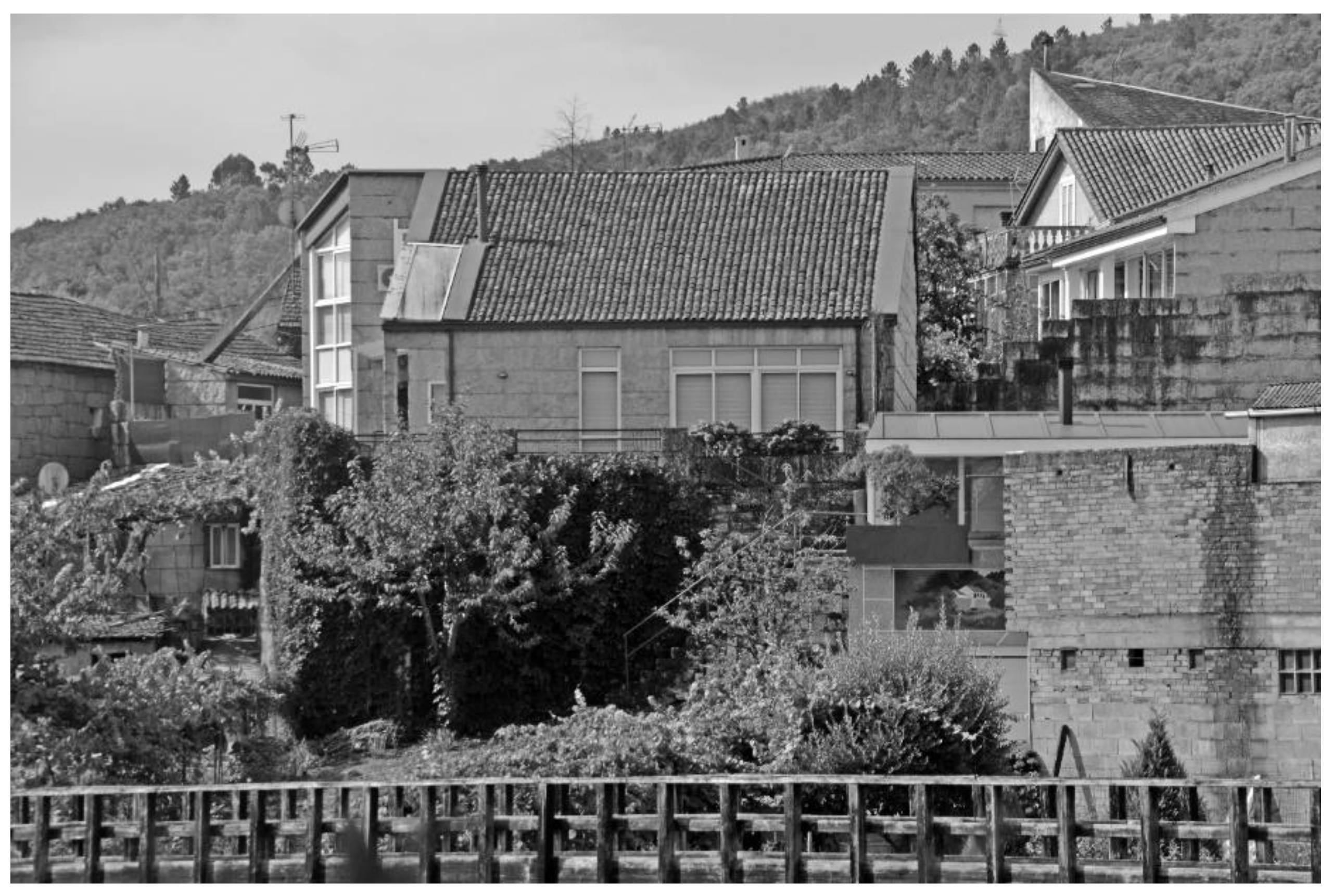
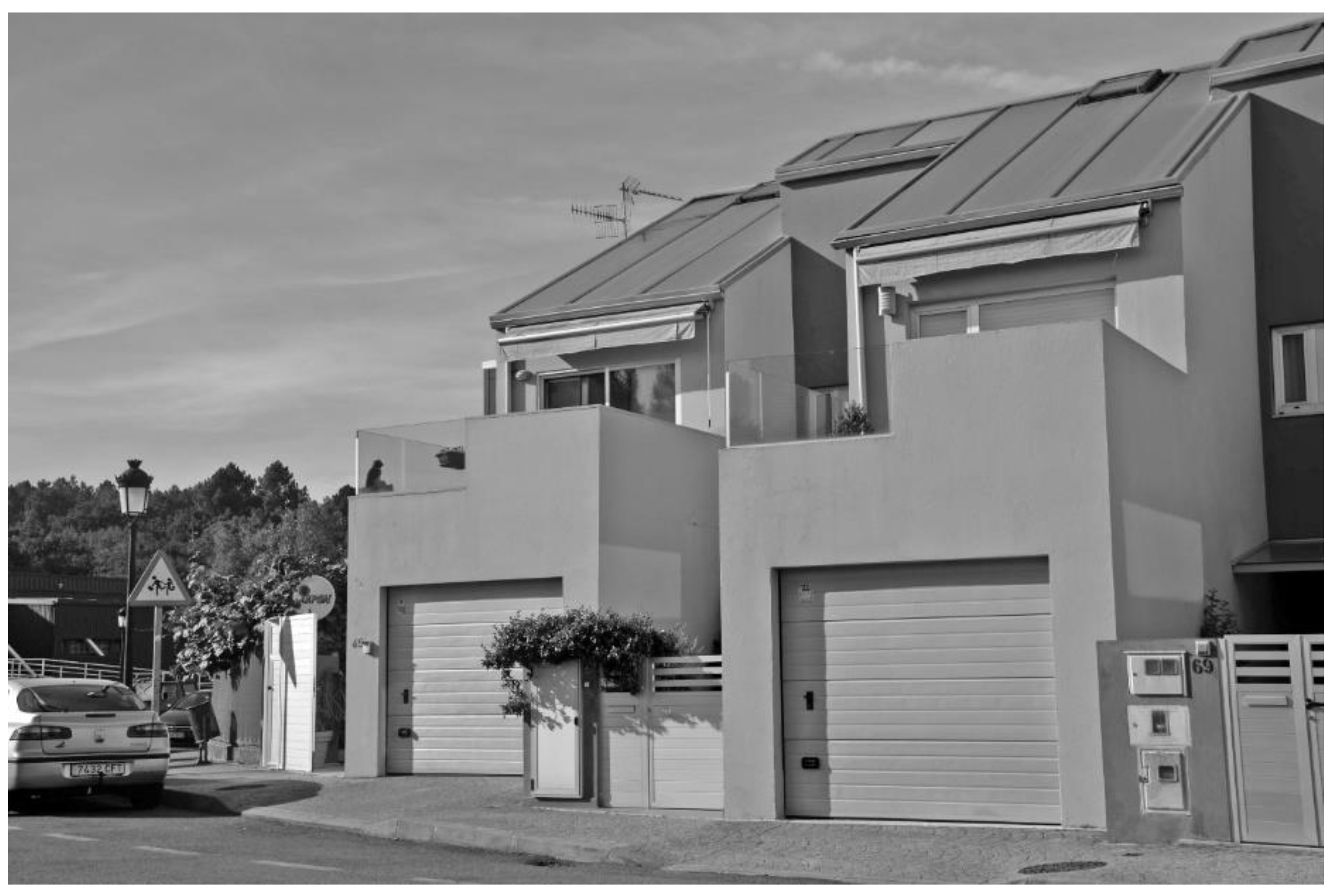
© 2020 by the authors. Licensee MDPI, Basel, Switzerland. This article is an open access article distributed under the terms and conditions of the Creative Commons Attribution (CC BY) license (http://creativecommons.org/licenses/by/4.0/).
Share and Cite
Novas-Ferradás, M.; Carreiro-Otero, M.; López-González, C. Galician Female Architects—A Critical Approach to Inequality in the Architectural Profession (1931–1986). Arts 2020, 9, 33. https://doi.org/10.3390/arts9010033
Novas-Ferradás M, Carreiro-Otero M, López-González C. Galician Female Architects—A Critical Approach to Inequality in the Architectural Profession (1931–1986). Arts. 2020; 9(1):33. https://doi.org/10.3390/arts9010033
Chicago/Turabian StyleNovas-Ferradás, María, María Carreiro-Otero, and Cándido López-González. 2020. "Galician Female Architects—A Critical Approach to Inequality in the Architectural Profession (1931–1986)" Arts 9, no. 1: 33. https://doi.org/10.3390/arts9010033
APA StyleNovas-Ferradás, M., Carreiro-Otero, M., & López-González, C. (2020). Galician Female Architects—A Critical Approach to Inequality in the Architectural Profession (1931–1986). Arts, 9(1), 33. https://doi.org/10.3390/arts9010033





